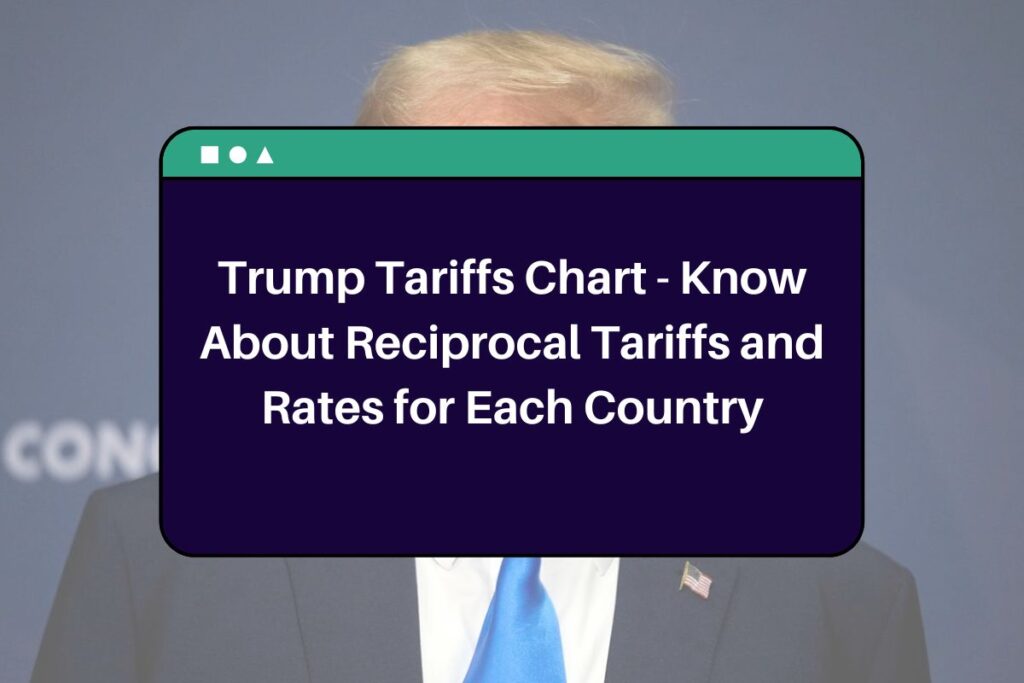At a White House event held in the Rose Garden on Wednesday, Donald Trump revealed and then implemented a two-step tariff strategy as part of his eagerly anticipated “Liberation Day” plans. With effect from April 5, the president is setting a baseline tariff rate of 10% on nations. The government will impose additional tariffs on some nations that it deems to be the worst violators.
Those additional responsibilities will be allocated on April 9. Those increased rates were decided on Wednesday, the president said, who has long criticized tariff and non-tariff barriers. All things considered, it was a significant move that, if it continues, may realign the entire trading system. Additionally, it marks the peak of Trump’s decades-long focus on unjust trade agreements and tariffs, which he claims caused America to be taken advantage of.
After the announcement, experts estimated that, after all additional charges are implemented, the US’s new weighted-average tariff rate may reach 29%, the highest level in almost a century. The president may be able to raise duties even more if nations respond, according to authority included in the executive order that Trump issued.
Trump Tariffs Chart
Trump, the president of the United States, declared a 10% base tax on all imports and imposed broad reciprocal tariffs on nations that impose significant import obstacles. Europe and Asia have suffered the most. Vietnam will pay a 46% tax, the European Union will impose a 20% charge, and China will pay a 34% rate. Trump and the White House posted images of a number of charts on social media that show the tariff rates that the US has placed on other nations.
The rates provided take into account the “Currency Manipulation and Trade Barriers” of each nation. These prices are accompanied by the new US tariff rates for every nation, including the EU. It is not just the Trump Tariffs Chart 2025 that these nations will have to pay. The White House said that the additional tax will be applied to the existing 20% tariff on China, bringing the overall tariff rate on China under Trump’s administration to 54%.
What are Reciprocal tariffs?
One trade policy tool is reciprocal tariffs, in which a nation applies import duties equal to the duties its exports are subject to in other markets. Fairness is the foundation of the idea: if one nation imposes high taxes on imports, the other nation retaliates by imposing comparable levies on goods originating from the first nation.
By making sure that no country unfairly gains from lowered trade barriers, this strategy seeks to establish a balanced trading environment. Country B would retaliate by placing a 25% tariff on steel imports from Country A, for instance, if Country A levies a 25% duty on steel imports from Country B. The objective is to deter protectionist measures and persuade nations to negotiate tariff reductions.

Full list and rates for each country with reciprocal tariffs
In his news conference on April 2, US President Donald Trump released the following list of reciprocal tariffs. Going ahead, all countries will face a minimum 10% tariff, while the administration will impose higher “reciprocal” charges on the dozens of countries listed below that it determined have significant obstacles to US exports. The additional charges are in addition to existing tariffs, such as the 20% levy Trump recently placed on Chinese items fentanyl-related tax.
Additionally, a prior exception for temporary items is being eliminated. Canada and Mexico are among the exceptions, and they are liable to duties that were already declared. Some products from important sectors, such as timber, steel, aluminum, cars, copper, medicines, and semiconductors, are also free from these taxes. Rather, the president will impose tariffs on them at rates that have already been decided or will be decided soon.
List of country’s subject to reciprocal tariffs
Special focus is paid to nations like China, India, and EU members that have large trade surpluses with the US. Trump asserts that these countries hurt American exporters by maintaining higher average tariff rates than the US.
| Name of Country | Tariffs Charged to US | DRT |
|---|---|---|
| China | 67% | 34% |
| European Union | 39% | 20% |
| Vietnam | 90% | 46% |
| Taiwan | 64% | 32% |
| Japan | 46% | 24% |
| India | 52% | 26% |
| South Korea | 50% | 25% |
| Thailand | 72% | 36% |
| Switzerland | 61% | 31% |
| Indonesia | 64% | 32% |
| Malaysia | 47% | 24% |
| Cambodia | 97% | 49% |
| United Kingdom | 10% | 10% |
| South Africa | 60% | 30% |
| Brazil | 10% | 10% |
| Bangladesh | 74% | 37% |
| Singapore | 10% | 10% |
| Israel | 33% | 17% |
| Philippines | 34% | 17% |
| Chile | 10% | 10% |
| Australia | 10% | 10% |
| Pakistan | 58% | 29% |
| Turkey | 10% | 10% |
| Sri Lanka | 88% | 44% |
| Colombia | 10% | 10% |
| Peru | 10% | 10% |
| Nicaragua | 36% | 18% |
| Norway | 30% | 15% |
| Costa Rica | 17% | 10% |
| Jordan | 40% | 20% |
| Dominican Republic | 10% | 10% |
| UAE | 10% | 10% |
| New Zealand | 20% | 10% |
| Argentina | 10% | 10% |
| Ecuador | 12% | 10% |
| Guatemala | 10% | 10% |
| Honduras | 10% | 10% |
| Madagascar | 93% | 47% |
| Myanmar | 88% | 44% |
| Tunisia | 55% | 28% |
| Kazakhstan | 74% | 37% |
| Serbia | 74% | 37% |
| Egypt | 10% | 10% |
| Saudi Arabia | 10% | 10% |
| El Salvador | 10% | 10% |
| Côte d’Ivoire | 41% | 21% |
| Laos | 95% | 48% |
| Botswana | 74% | 37% |
| Trinidad & Tobago | 12% | 10% |
| Morocco | 10% | 10% |
How is Donald trump using them?
President Donald Trump has framed reciprocal tariffs as a component of his larger “America First” agenda, making them a pillar of his trade strategy. In an official announcement on April 2, 2025, Trump said that his reciprocal tariff proposal was a necessary measure to counter what he claims are decades of unfair trade practices by other countries. Countries that put greater tariffs on American exports than the United States does on its own goods are the focus of Trump’s plan. Indian bikes are subject to a 100% duty, whilst American motorcycles are subject to a 2.4% tariff in the United States.
Reciprocal tariffs- Challenges and Criticisms?
Trump’s supporters applaud the proposal as a daring move in the direction of trade justice, but others caution about possible drawbacks:
- Higher Consumer Costs: Businesses and individuals who depend on imported items may see higher costs for these commodities in the United States as a result of reciprocal tariffs.
- Tensions in International Trade: The policy’s target nations may respond with tariffs of their own, which might lead to wider trade disputes or possibly a trade war.
- Complexity of Implementation; Because so many items are traded worldwide, it is administratively difficult to match tariffs on a product-by-product basis.
| Official Website | Click Here |
| Homepage | OFSSBihar.in |



